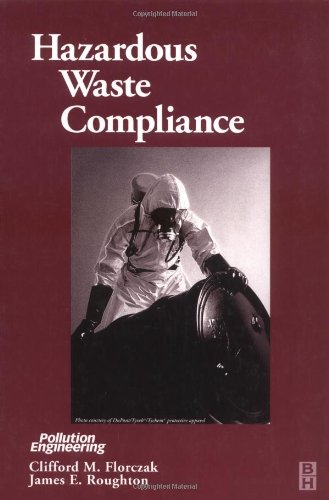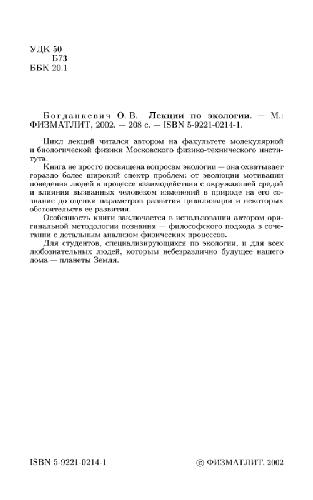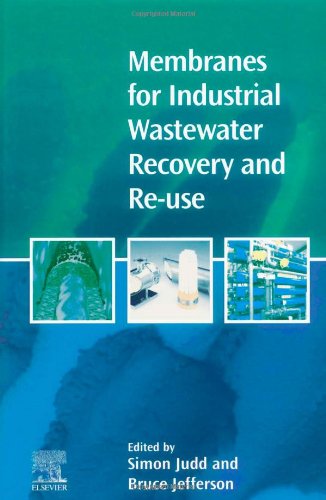Anne Beer, Cathy Higgins0419244603, 9780419244608
Table of contents :
Book Cover……Page 1
Half-Title……Page 2
Title……Page 3
Copyright……Page 4
Dedication……Page 5
Contents……Page 6
Preface……Page 10
Part One Site Planning……Page 12
WHEN IS IT NECESSARY TO PRODUCE A SITE PLAN?……Page 13
WHO NEEDS TO KNOW ABOUT SITE PLANNING?……Page 14
WHY A SPECIAL PLANNING PROCESS?……Page 15
THE SCOPE OF SITE PLANNING AND THE NEED FOR TEAM WORK……Page 16
APPOINTING A SITE PLANNING TEAM……Page 17
THE SEQUENCE IN PRODUCING A SITE PLAN……Page 18
THE SITE INVENTORY……Page 19
THE SITE PLAN……Page 20
References……Page 22
Fertile soils……Page 23
CULTURAL DIVERSITY……Page 24
The diverse human habitat……Page 25
LANDSCAPE AS MAN’S HABITAT……Page 26
Physical environment……Page 27
Human safety……Page 28
THE INITIAL BRIEF……Page 29
References……Page 30
Part Two The Site Inventory……Page 32
Information gathering……Page 33
Subjective assessment……Page 34
Carrying out the project work……Page 35
Geological problems and the development of a site……Page 36
BEARING CAPACITY……Page 37
AQUIFERS……Page 38
UNCONSOLIDATED MATERIAL……Page 41
GEOMORPHOLOGICAL PROCESSES WHICH INFLUENCE LAND USE……Page 42
WATER EROSION……Page 43
LANDSLIPS……Page 44
Surface water and site planning……Page 46
THE RIVER BASIN……Page 47
FLOOD PROBLEMS……Page 48
SEA……Page 49
SLOPE ANALYSIS……Page 50
GATHERING INFORMATION……Page 51
HUMAN COMFORT……Page 53
Shade……Page 55
Local factors influencing solar radiation……Page 57
The need to cool the air in hot climates……Page 58
Manipulating the micro-climate……Page 59
Vegetation and temperature control……Page 60
Hard prolonged frost……Page 61
Wind speed and site planning……Page 62
Wind in cities……Page 63
Windbreaks……Page 64
PRECIPITATION……Page 65
FOG AND MIST……Page 66
Carrying out the project work……Page 67
The natural environment and site planning……Page 68
Soils: their influence on site planning……Page 69
UK soil survey (classes 1–7)……Page 70
IDENTIFICATION OF SOIL TYPES……Page 71
IMPERMEABLE LAYERS……Page 72
SOIL FERTILITY……Page 73
Surface wash erosion……Page 74
PLANTS AND PEOPLE……Page 75
PLANT COMMUNITIES……Page 76
PLANTS AND PHYSICAL ENVIRONMENTAL QUALITY……Page 78
Air pollution kills plants……Page 79
Plants and wind control……Page 80
Plants as a source of delight……Page 81
Ecological value and site planning……Page 82
References……Page 83
6 Aspects of the social environment: land use, land management and landscape character……Page 84
GREENSPACE……Page 85
SERVICES……Page 86
AGRICULTURE, WOODLAND, FORESTRY AND EXTRACTIVE INDUSTRIES……Page 87
Past land use and historic features……Page 88
CONSIDERING THE APPEARANCE OF A LANDSCAPE……Page 90
IDENTIFYING LANDSCAPE STRUCTURE ZONES— A BASIS FOR URBAN ENVIRONMENTAL PLANNING AT THE LOCAL LEVEL……Page 91
VISUAL QUALITY OF THE VIEWS……Page 93
References……Page 94
Part Three Spaces For People……Page 95
VISUAL CHARACTERISTICS OF SPACES……Page 96
MAKING SITES LIVABLE……Page 97
How people experience environments……Page 98
THE ROLE OF FASCINATION……Page 100
IMPLICATIONS FOR SITE PLANNING……Page 101
SEEING LANDSCAPE……Page 102
PLACES IN WHICH PEOPLE CHOOSE TO LIVE……Page 103
PREFERENCES VARY BETWEEN INDIVIDUALS AND GROUPS……Page 104
ENVIRONMENTS MUST MAKE SENSE TO THE USER……Page 105
PRIVACY AND PERSONAL TERRITORY……Page 106
Nature and ‘green’ in life and in cities……Page 107
THE FINDINGS OF THE OBSERVATION STUDIES OF BEHAVIOUR……Page 108
WHAT ARE THE OPEN SPACES OF A CITY?……Page 110
THE IMPORTANCE OF OPEN SPACE FOR COMMUNITIES……Page 111
References……Page 112
Public participation……Page 114
IDENTIFYING THE MAJOR ACTIVITIES……Page 115
User satisfaction……Page 116
ACTIVITY LISTS……Page 117
Useful literature……Page 118
Factual information required prior to the production of a site plan……Page 119
The range of settings……Page 121
CATERING FOR PEOPLE’S PSYCHOLOGICAL NEEDS……Page 122
Security: a crucial requirement on any site……Page 124
The sense of belonging and feelings of individual identity……Page 126
THE ROLE OF ‘GREEN’ IN DEVELOPING SPECIAL LOCAL CHARACTER……Page 128
Preparing briefs for environmental settings……Page 130
PERFORMANCE STANDARDS……Page 131
DECIDING WHERE THE ACTIVITY SHOULD BE LOCATED……Page 132
Carrying out the project work……Page 133
References……Page 134
Part Four The Site Plan……Page 135
Assessing the site’s potential……Page 136
INTERRELATIONSHIPS BETWEEN ACTIVITIES AND STRUCTURES……Page 138
ASSETS AND LIABILITIES……Page 140
LAND AND LANDSCAPE MANAGEMENT……Page 141
References……Page 143
10 Production of the site plan……Page 144
The financial aspects of site planning……Page 145
THE MAIN SOURCES FOR INFORMATION TO DETERMINE APPROPRIATE STRATEGIES……Page 146
SITE DEVELOPMENT OBJECTIVES……Page 147
APPROPRIATE ENVIRONMENTAL GUIDELINES……Page 148
THE LANDSCAPE STRATEGY……Page 149
GUIDELINES FOR SITE MANAGEMENT……Page 150
THE SITE LANDSCAPE PLAN……Page 151
Planning for the future……Page 152
References……Page 153
The brief……Page 154
Part Five Sustainable Urban Environmental Planning……Page 163
THE PLANNING PROCESS……Page 164
SOURCES OF ENVIRONMENTAL DATA……Page 165
LOCAL GEOLOGICAL AND TOPOGRAPHIC INFORMATION: DATA CHECK-LIST……Page 167
Mineral reserves……Page 168
Slope analysis……Page 169
Assessing the climate data to identify the warmer and colder areas……Page 170
Surface water systems, water quality and pollution……Page 171
SOILS: DATA CHECK-LIST……Page 172
The natural environment: biotic data collection……Page 173
Plotting other vegetation……Page 174
BIODIVERSITY ASSESSMENT……Page 175
Very little value……Page 176
Land uses within and around the project area……Page 177
Additional data on housing in the community study area……Page 178
Land planning controls……Page 179
Historic features on and around the project area……Page 180
Views and scenery—enclosure and inter-visibility……Page 181
Why is local water management important for a community environmental plan?……Page 182
Physical characteristics of a district to be considered when developing an effective water management strategy……Page 183
Biodiversity assessment for Community Environmental Plans……Page 184
Land use and landscape……Page 185
Sustainable transport……Page 186
Increase the area of permeable surface……Page 187
Maximize genetic diversity……Page 188
Greenspace—the unifying element……Page 189
NEIGHBOURHOOD ‘ACTION’ DAYS AND FUNDING……Page 191
TREE COVER IN DOMESTIC GARDENS AND PRIVATE PROPERTY IN URBAN AND SUBURBAN AREAS……Page 192
Community preference and involvement……Page 193
An illustration of site planning processes for an urban site……Page 194
The client’s brief and its evaluation by the team……Page 195
Local site context plan……Page 196
GEOLOGY AND GEOMORPHOLOGY……Page 197
SURFACE WATER AND DRAINAGE……Page 198
TOPOGRAPHY……Page 199
LOCAL CLIMATE AND MICROCLIMATE……Page 200
SOILS……Page 201
VEGETATION AND RELATIVE ECOLOGICAL VALUE……Page 202
SITE STRUCTURES……Page 203
PLANNING CONTEXT AND PLANNING CONTROL……Page 204
TRANSPORT AND COMMUNICATIONS……Page 205
PEOPLE……Page 206
VISUAL AND SENSORY EXPERIENCE……Page 207
SITE HISTORY……Page 208
WEBBING……Page 210
IDENTIFYING PATTERNS……Page 211
Pattern 172 garden growing wild……Page 212
Site potential— integration……Page 213
Strategies for the site……Page 214
ELEMENTS OR LAYERS OF THE SITE PLAN……Page 215
Uses of the site plan for future planning and design……Page 216
References to Part Five……Page 221
Local Agenda 21– summary……Page 222
Sustainable urban environments……Page 223
Index……Page 225







Reviews
There are no reviews yet.